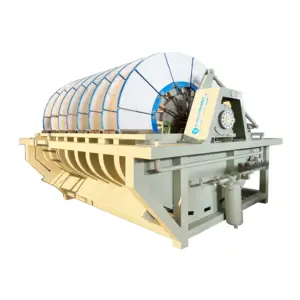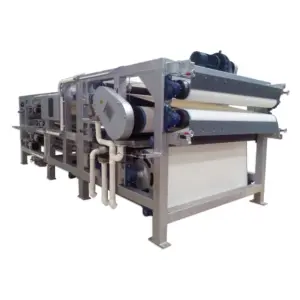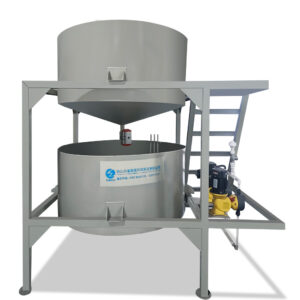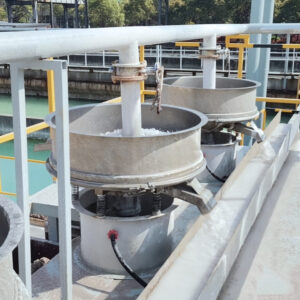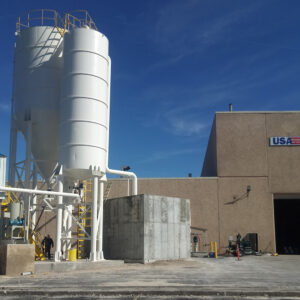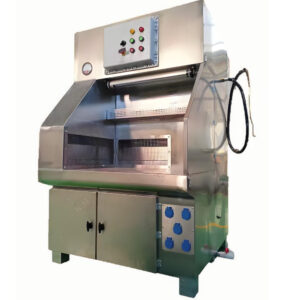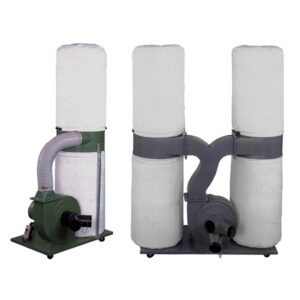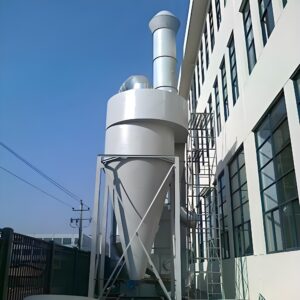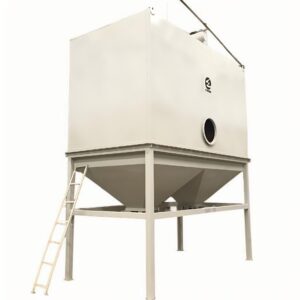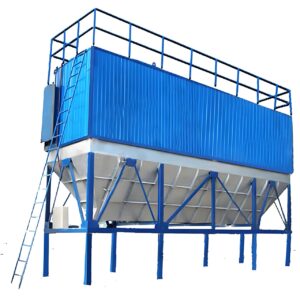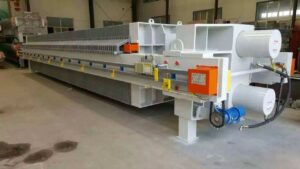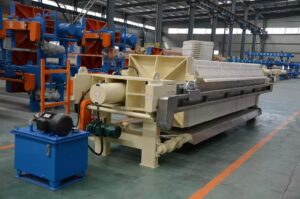Перед промышленными предприятиями, занимающимися добычей полезных ископаемых, очисткой сточных вод и химической переработкой, стоит важнейшая задача: добиться максимального эффективность обезвоживания при минимизации эксплуатационных расходов. Традиционные методы фильтрации часто оказываются недостаточными при работе со сложными суспензиями, мелкими частицами или в условиях больших объемов. Последствия неадекватных систем фильтрации включают повышенное содержание влаги в фильтровальном шламе, увеличение затрат на утилизацию, проблемы с соблюдением экологических норм и значительные потери энергии, которые могут составлять 30-40% от эксплуатационных расходов.
Современная технология мембранных фильтр-прессов предлагает комплексное решение этих проблем, обеспечивая превосходное разделение твердых и жидких веществ с автоматизированным управлением и оптимизированной производительностью. В этой статье рассматривается полный процесс установки, варианты конфигурации и стратегии оптимизации, которые могут превратить ваши операции по фильтрации из узкого места в конкурентное преимущество.
Что такое мембранный фильтр-пресс и как он работает?
Мембранные фильтр-прессы представляют собой эволюцию традиционных пластинчато-рамных фильтр-прессов, в которых используются гибкие мембраны, обеспечивающие дополнительную силу сжатия во время цикла фильтрации. В отличие от традиционных систем, которые полагаются исключительно на гидравлическое давление, мембранные фильтр-прессы используют двухступенчатая компрессия - первоначальная фильтрация с последующим надуванием мембраны для усиленного обезвоживания.
Основные принципы работы
Процесс фильтрации начинается с подачи суспензии под давлением, обычно составляющим 15-30 бар в зависимости от требований применения. По мере накопления твердых частиц на фильтровальных тканях формируется первичная фильтровальная лепешка, образующаяся при обычной фильтрации под давлением. Отличительное преимущество появляется на этапе сжатия мембраны, когда надутые мембраны создают дополнительное давление 8-16 бар, снижая конечное содержание влаги в кеке на 3-8% по сравнению с обычными системами.
Согласно последним отраслевым данным, мембранные фильтр-прессы достигают конечной влажности кека 15-25% по сравнению с 25-35% для традиционных пластинчатых прессов с углублением. Это улучшение приводит к существенной экономии затрат на утилизацию кека, его транспортировку и последующую переработку.
Передовые системы управления
Современные мембранные фильтр-прессы оснащены сложными системами управления, которые контролируют перепады давления, расход и время цикла. Эти системы автоматически регулируют параметры в зависимости от условий в реальном времени, обеспечивая стабильную производительность при различных характеристиках сырья.
| Параметр | Обычная пресса | Мембранная пресса | Улучшение |
|---|---|---|---|
| Влажность пирога | 25-35% | 15-25% | 30-40% уменьшение |
| Время цикла | 3-5 часов | 2-3 часа | 25-35% быстрее |
| Потребление энергии | Базовый уровень 100% | 75-85% | 15-25% экономия |
| Уровень автоматизации | Основные | Расширенный | Полный контроль ПЛК |
Почему стоит выбрать мембранный фильтр-пресс, а не обычные системы?
Решение о внедрении технологии мембранных фильтр-прессов обусловлено ощутимыми эксплуатационными преимуществами, которые напрямую влияют на итоговые показатели. Отраслевой анализ показывает, что предприятия, переходящие на мембранные системы, обычно достигают срока окупаемости в 18-24 месяца за счет снижения эксплуатационных расходов и повышения эффективности.
Превосходные возможности обезвоживания
Мембранные фильтр-прессы отлично справляются с задачами, требующими максимального удаления влаги. Двойное давление позволяет эффективно обезвоживать сложные материалы, включая тонкодисперсные глины, биологические осадки и химические осадки, которые не поддаются традиционным методам фильтрации. Полевые данные, полученные на городских очистных сооружениях, свидетельствуют о снижении объема биозола на 40-60% при переходе от ленточных фильтр-прессов к мембранным системам.
Операционная гибкость
Современные конфигурации мембранных фильтр-прессов учитывают широкие вариации характеристик сырья, не требуя механических регулировок. Переменные настройки давления в мембране позволяют операторам оптимизировать производительность для различных типов суспензий, сезонных колебаний или производственных требований. Такая гибкость особенно ценна в промышленности, где качество сырья сильно колеблется.
Экономические преимущества
Хотя мембранные фильтр-прессы требуют более высоких первоначальных капитальных вложений по сравнению с обычными системами, общая стоимость владения обычно оказывается выгоднее мембранной технологии. Сокращение расходов на утилизацию кека, снижение энергопотребления и потребности в техническом обслуживании способствуют экономии на эксплуатации в размере 20-35% в год.
Однако организации должны учитывать сложность процедур замены мембран и необходимость привлечения специалистов по обслуживанию. Срок службы мембраны обычно составляет 12-18 месяцев в зависимости от тяжести применения и практики обслуживания.
Как спланировать установку мембранного фильтр-пресса?
Успешное внедрение мембранного фильтр-пресса требует всестороннего планирования, учитывающего технологические требования, ограничения по площади и интеграцию с существующими системами. Этап планирования определяет долгосрочный успех эксплуатации и экономическую эффективность.
Расчеты производительности и определение размеров
Правильный расчет размеров начинается с точной оценки загрузки твердых частиц, желаемой сухости кека и требуемой пропускной способности. Промышленные эксперты рекомендуют увеличить размер на 10-15%, чтобы учесть вариации процесса и будущие потребности в расширении. PORVOO Clean Tech Специалисты по фильтрации подчеркивают важность пилотных испытаний на реальных технологических потоках для подтверждения предположений о размерах.
Основные параметры размеров включают:
- Скорость загрузки твердых частиц (кг/м²/час)
- Требования к площади фильтрации в зависимости от удельного сопротивления
- Требования к давлению на мембране при заданном содержании влаги
- Оптимизация времени цикла для максимальной производительности
Требования к подготовке участка
Установка мембранных фильтр-прессов требует внимательного отношения к конструкции фундамента, требованиям к инженерным коммуникациям и экологическим соображениям. Правильные фундаментные системы должны выдерживать динамические нагрузки от гидравлических систем закрытия и оборудования для надувания мембраны.
| Требование | Технические характеристики | Критические факторы |
|---|---|---|
| Фонд | Армированный бетон | Виброизоляция, дренаж |
| Электрика | 480 В 3-фазный типовой | Частотно-регулируемые приводы |
| Сжатый воздух | 6-8 бар | Раздувание мембраны, контроль |
| Водоснабжение | Технологическая/промывочная вода | Качество, давление, температура |
Интеграционное планирование
Успешная установка мембранного фильтр-пресса требует беспрепятственной интеграции с процессами выше и ниже по течению. Конструкция системы подачи должна обеспечивать постоянную подачу суспензии, не допуская ее оседания или сегрегации. Системы обработки фильтрата должны иметь достаточную емкость для нормальной работы и циклов промывки мембраны.
Оптимизация технологических процессов
Конструкция системы мембранной фильтрации должна предусматривать возможность рециркуляции для кондиционирования и промывки сырья. Правильная конструкция трубопроводов минимизирует потери давления и обеспечивает равномерное распределение по камерам фильтра. Многие установки выигрывают от использования систем частотно-регулируемого привода, которые оптимизируют потребление энергии в зависимости от условий процесса.
Каковы ключевые компоненты конфигурации?
Понимание компонентов конфигурации мембранных фильтр-прессов позволяет принимать обоснованные решения о возможностях и характеристиках системы. Каждый компонент вносит свой вклад в общую надежность и эффективность работы системы.
Выбор мембранной технологии
Выбор мембраны существенно влияет на производительность обезвоживания и эксплуатационные расходы. Резиновые мембраны обладают отличной долговечностью и химической стойкостью, но требуют более высокого давления накачки. Полипропиленовые мембраны обеспечивают превосходную гибкость и более простую установку, сохраняя при этом хорошую химическую совместимость.
Последние достижения в области мембранных материалов включают многослойные конструкции, которые сочетают в себе долговечность и повышенную гибкость. Эти гибридные мембраны демонстрируют на 20-30% более длительный срок службы по сравнению с обычными материалами, сохраняя при этом стабильные показатели обезвоживания.
Проектирование гидравлических систем
Гидравлическая система закрытия обеспечивает основное усилие для сжатия пластин и работы мембраны. Современные системы оснащены клапанами пропорционального управления, которые обеспечивают точное регулирование давления в течение всего цикла фильтрации. Системы аккумуляторов накапливают гидравлическую энергию, снижая пиковые нагрузки и повышая скорость реакции системы.
Конфигурация фильтрующего материала
Выбор фильтровальной ткани играет решающую роль в установка мембранного фильтр-пресса успех. Монофиламентные ткани обладают превосходными свойствами по высвобождению пирога и снижению склонности к слеплению. Мультифиламентные ткани обеспечивают превосходное удержание мелких частиц, но могут требовать более интенсивной очистки.
Системы автоматизации и управления
Передовые системы управления объединяют работу мембранных фильтр-прессов с общезаводскими сетями автоматизации. Эти системы отслеживают ключевые показатели производительности, автоматически регулируют рабочие параметры и выдают предупреждения о необходимости профилактического обслуживания в зависимости от состояния оборудования.
Как оптимизировать производительность мембранной фильтрации?
Оптимизация производительности требует систематического внимания к эксплуатационным параметрам, практике технического обслуживания и инициативам по постоянному совершенствованию. Хорошо оптимизированные системы достигают эксплуатационной готовности 95%+ при сохранении стабильной производительности обезвоживания.
Оптимизация профиля давления
Оптимальные профили давления обеспечивают баланс между эффективностью обезвоживания и долговечностью мембраны. Лучшие отраслевые практики рекомендуют постепенное повышение давления на начальном этапе фильтрации с последующим поддержанием стабильного давления надува мембраны. Чрезмерные перепады давления могут привести к преждевременному выходу мембраны из строя, в то время как недостаточное давление снижает эффективность обезвоживания.
Управление временем цикла
Оптимизация времени цикла предполагает баланс между требованиями к производительности и энергоэффективностью. Более короткие циклы максимизируют суточную производительность, но могут увеличить расход энергии на единицу перерабатываемых твердых веществ. Более длинные циклы повышают энергоэффективность, но снижают производительность системы.
Стратегии раздувания мембраны
Правильная техника надувания мембран существенно влияет на результаты обезвоживания. Последовательные схемы надувания, при которых мембраны надуваются поэтапно, часто дают лучшие результаты по сравнению с одновременным надуванием. Такой подход обеспечивает равномерное сжатие кека и предотвращает возникновение преференциальных потоков.
Мониторинг производительности
Непрерывный мониторинг ключевых показателей производительности обеспечивает проактивную оптимизацию и планирование технического обслуживания. К важнейшим параметрам относятся:
- Мутность фильтрата и скорость потока
- Перепады давления на мембране
- Равномерность толщины коржа
- Потребление энергии за цикл
Какие аспекты установки имеют наибольшее значение?
Профессиональные методы установки определяют долгосрочную надежность и производительность мембранных фильтр-прессов. Правильные процедуры установки сводят к минимуму проблемы с запуском и обеспечивают оптимальные эксплуатационные характеристики.
Размещение оборудования и доступ к нему
Расположение мембранного фильтр-пресса должно учитывать требования к техническому обслуживанию, безопасность оператора и необходимость транспортировки материалов. Достаточное свободное пространство вокруг оборудования позволяет проводить замену мембран и плановое техническое обслуживание. Доступ к мостовому крану упрощает операции по обслуживанию и сокращает время простоя.
Коммунальные соединения
Правильное подключение к электросети обеспечивает надежную работу и соответствие требованиям безопасности. Электрооборудование должно соответствовать местным нормам и включать в себя соответствующие блокировки безопасности. Системы сжатого воздуха должны иметь достаточную мощность как для нормальной работы, так и для аварийных процедур.
Процедуры ввода в эксплуатацию
Систематические процедуры ввода в эксплуатацию подтверждают работоспособность системы и выявляют потенциальные проблемы до начала полномасштабной эксплуатации. Мероприятия по вводу в эксплуатацию включают испытания на герметичность, калибровку давления и проверку производительности с использованием реальных технологических потоков.
Недавний пример из практики горнодобывающего предприятия продемонстрировал важность правильного ввода в эксплуатацию. Первоначальные проблемы с вводом в эксплуатацию были связаны с неправильной установкой мембраны, что привело к снижению эффективности обезвоживания на 15%. Корректирующие меры, принятые во время ввода в эксплуатацию, позволили избежать постоянных проблем в работе.
Как обслуживать мембранную систему фильтрации?
Профилактическое обслуживание позволяет повысить надежность мембранных фильтр-прессов и минимизировать общие эксплуатационные расходы. Хорошо обслуживаемые системы обеспечивают срок службы мембран 15-18 месяцев при сохранении стабильной производительности.
Уход за мембраной и ее замена
Регулярный осмотр мембраны позволяет выявить потенциальные проблемы до возникновения отказов. Методы визуального осмотра позволяют обнаружить повреждение мембраны, чрезмерный износ или скопление загрязнений. Правильные протоколы очистки удаляют накопившиеся отложения, не повреждая материалы мембраны.
Уход за фильтровальной тканью
Состояние фильтровальной ткани напрямую влияет на эффективность обезвоживания и долговечность мембраны. Регулярная очистка удаляет скопившиеся мелкие частицы и предотвращает засорение ткани. Системы промывки под высоким давлением эффективно удаляют отложения, не допуская повреждения ткани.
Обслуживание гидравлической системы
Техническое обслуживание гидравлических систем обеспечивает надежную работу и предотвращает дорогостоящие поломки. Регулярный анализ масла позволяет выявить проблемы загрязнения или деградации. Надлежащие системы фильтрации поддерживают качество масла и продлевают срок службы компонентов.
| Задача по обслуживанию | Частота | Критические точки |
|---|---|---|
| Проверка мембраны | Еженедельник | Повреждения, износ, загрязнения |
| Очистка фильтровальной ткани | Ежедневно | Ослепление, выпуск пирожных |
| Анализ гидравлического масла | Ежемесячно | Загрязнение, деградация |
| Калибровка давления | Ежеквартально | Точность, повторяемость |
Когда следует обновлять существующую систему?
Определение оптимальных сроков модернизации мембранных фильтр-прессов требует анализа текущей производительности, затрат на обслуживание и эксплуатационных требований. Стратегическая модернизация может повысить эффективность и одновременно снизить долгосрочные эксплуатационные расходы.
Бенчмаркинг производительности
Регулярный сравнительный анализ производительности выявляет возможности для улучшения и обосновывает решения о модернизации. Сравнение с отраслевыми стандартами позволяет выявить потенциальные возможности повышения эффективности и снижения затрат.
Соображения, связанные с развитием технологий
Стремительный прогресс в области мембранных технологий, систем управления и автоматизации создает возможности для значительного повышения производительности. Современные системы включают в себя энергоэффективные конструкции и передовые материалы, которые снижают эксплуатационные расходы.
Экономический анализ
Всесторонний экономический анализ учитывает капитальные затраты, экономию на эксплуатации и факторы риска. Типичные проекты модернизации окупаются в течение 2-3 лет за счет снижения эксплуатационных расходов и повышения эффективности.
По нашему опыту работы с промышленными клиентами, предприятия, которые активно модернизируют свои системы фильтрации, сохраняют конкурентные преимущества по сравнению с теми, кто откладывает улучшения. Сайт современное фильтрационное оборудование Доступные сегодня технологии предлагают возможности, которые были невозможны всего пять лет назад.
Заключение
Успешная установка мембранного фильтр-пресса требует комплексного планирования, правильной конфигурации и постоянных усилий по оптимизации. Основные выводы, сделанные на основе этого анализа, включают в себя важность точных расчетов размеров, правильного выбора мембраны и систематического технического обслуживания. Организации, добивающиеся наилучших результатов, вкладывают средства в профессиональную установку, всестороннее обучение и инициативы по постоянному совершенствованию.
Сайт мембранный фильтр-пресс Технология продолжает развиваться, появляются новые материалы, системы управления и возможности автоматизации, обеспечивающие повышение производительности и снижение эксплуатационных расходов. Отраслевые тенденции указывают на растущее внедрение интеллектуальных систем фильтрации, которые интегрируются в общезаводские сети автоматизации и обеспечивают возможность прогнозируемого обслуживания.
Для организаций, рассматривающих возможность внедрения мембранного фильтр-пресса, следующие шаги включают в себя проведение пилотных испытаний с реальными технологическими потоками, разработку подробных спецификаций и сотрудничество с опытными поставщиками. На сайте профессиональные решения для фильтрации Доступное сегодня оборудование может превратить ваши операции по обезвоживанию из центра затрат в конкурентное преимущество.
С какими конкретными проблемами вы сталкиваетесь в своей текущей системе фильтрации, и как технология мембранных фильтр-прессов может решить эти проблемы?
Часто задаваемые вопросы
Q: Что такое мембранный фильтр-пресс и почему его установка важна?
О: Мембранный фильтр-пресс - это тип оборудования для фильтрации периодического действия, в котором используются мембраны для прессования и обезвоживания осадка или суспензии с получением сухой фильтровальной лепешки. Настройка очень важна, поскольку она обеспечивает правильное выравнивание, чистоту и готовность к работе всех компонентов, таких как фильтрующие плиты, мембраны, гидравлические системы и клапаны. Правильная настройка напрямую влияет на эффективность фильтрации, сухость кека и долговечность системы, что делает ее основополагающим шагом для успешной работы.
Q: Как подготовить мембранный фильтр-пресс к запуску?
О: Подготовка мембранного фильтр-пресса включает в себя несколько ключевых этапов:
- Очистите все фильтровальные пластины и мембраны, чтобы удалить остатки материала.
- Проверьте и выровняйте фильтрующие пластины и убедитесь, что фильтрующие ткани установлены правильно.
- Проверьте уровень жидкости в гидравлической системе и возможные утечки.
- Заправьте питательный насос и правильно расположите все клапаны для фильтрации.
Такая подготовка обеспечивает бесперебойную работу, предотвращает протечки и помогает поддерживать постоянное качество фильтрации.
Q: Каковы критические аспекты конфигурации мембранного фильтр-пресса для обеспечения оптимальной производительности?
О: Оптимизация конфигурации сосредоточена на:
- Установите правильное гидравлическое давление (обычно около 40 бар) для обеспечения плотного уплотнения пластин.
- Регулировка надувания мембраны для максимального сжатия лепешки без повреждения пластин.
- Управление расходом и объемом подаваемой суспензии для сбалансированных циклов фильтрации.
- Выбор времени прессования и сушки жмыха для достижения желаемой влажности жмыха.
Эти настройки позволяют повысить скорость фильтрации, сухость жмыха и долговечность оборудования.
Q: Как оптимизировать цикл работы мембранного фильтр-пресса для повышения производительности?
О: Чтобы оптимизировать пропускную способность:
- Минимизация времени простоя за счет оптимизации процесса выгрузки кека и открытия/закрытия пресса.
- Поддерживайте постоянное гидравлическое давление, чтобы уменьшить колебания цикла.
- Используйте автоматизированные системы управления для точной синхронизации этапов фильтрации, прессования и надувания мембраны.
- Регулярно контролируйте свойства шлама и соответствующим образом регулируйте скорость подачи.
Оптимизация этих факторов повышает общую эффективность фильтрации и снижает эксплуатационные расходы.
Q: Какие советы по техническому обслуживанию поддерживают конфигурацию и производительность мембранного фильтр-пресса?
О: Основные методы технического обслуживания включают:
- Регулярная очистка пластин и мембран после каждого прогона для предотвращения загрязнения.
- Часто проверяйте гидравлические жидкости и уплотнения, чтобы избежать утечек.
- Проверка и замена фильтрующих тканей по мере необходимости для поддержания качества фильтрации.
- Контроль повреждений или смещения пластин и их своевременное устранение.
Проактивное обслуживание сохраняет целостность установки и поддерживает оптимальную производительность фильтрации.
Q: Какую роль играет автоматизация в настройке и оптимизации работы мембранного фильтр-пресса?
A: Автоматизация повышает эффективность работы мембранного фильтр-пресса за счет:
- Обеспечивает точный контроль над гидравлическим давлением и накачиванием мембраны.
- Возможность программирования циклов фильтрации для обеспечения постоянства и воспроизводимости.
- Сокращение человеческих ошибок на этапах настройки и эксплуатации.
- Позволяет в режиме реального времени контролировать и корректировать оптимальную производительность.
Внедрение автоматизации приводит к повышению эффективности, сокращению трудозатрат и повышению надежности фильтрации.
Внешние ресурсы
Запуск мембранного фильтр-пресса: Пошаговое руководство - porvoo - Предлагает полное практическое руководство по подготовке, настройке и запуску системы мембранного фильтр-пресса, уделяя особое внимание правильной настройке и обслуживанию для достижения стабильных результатов.
Как оптимизировать долговечность вашего фильтр-пресса? - Роксия - Подробно описаны передовые методы настройки, технического обслуживания и выбора компонентов для повышения производительности и долговечности фильтр-пресса, а также советы по настройке и оптимизации.
Пилотное испытание фильтр-пресса - KUOSI - Объясняет роль пилотных испытаний в оптимизации настройки фильтр-пресса, включая варианты мембранных фильтров и регулируемые параметры для улучшения разделения твердой и жидкой фаз.
Лучшие практики по оптимизации и расширению масштабов процессов микрофильтрации TFF (PDF) - Предоставляет подробные технические рекомендации по конфигурации мембранных модулей, управлению потоком пермеата и оптимизации процессов, применимых к установкам мембранной фильтрации.
Мембранный фильтр-пресс для процесса фракционной кристаллизации - Рассматриваются эффективность и рабочий процесс мембранных фильтр-прессов, включая сравнение с традиционными методами и вспомогательные программы для оптимизации цикла.
Конфигурация и проектирование фильтр-прессов - M.W. Watermark - Представлен обзор вариантов конструкции мембранных фильтр-прессов, переменных конфигурации и способов оптимизации установок для конкретных промышленных применений.
